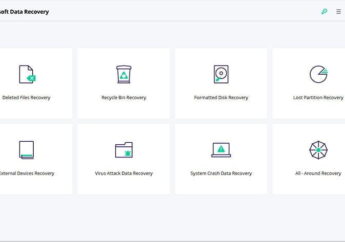Why Hyperautomation Is The Future Of Intelligent Automation
by Abdul Aziz Mondal Technology 30 March 2023

End-to-end automation refers to combining different technologies such as artificial intelligence (AI), machine learning, robotic process automation (RPA), and others to automate complex business processes. This holistic approach to automation has the potential to revolutionize the way organizations operate, increasing efficiency, productivity, and innovation. This article will discuss why End-to-end automation or hyperautomation is the future of Intelligent Automation and how it can benefit businesses.
The Need For End-To-End Automation
Businesses today operate in a highly competitive and rapidly changing environment. They must continuously innovate and optimize their operations to remain relevant and competitive. The problem is that most automation solutions today are designed to automate specific tasks or processes, leaving gaps in the automation process. This is where it comes in. It enables end-to-end automation of business processes, allowing organizations to streamline operations and optimize productivity.
The Benefits Of RPA
Robotic Process Automation (RPA) has already proven valuable in automating repetitive and mundane tasks. However, RPA alone is not enough to achieve end-to-end automation. End-to-end automation combines RPA with other technologies, such as AI and machine learning, to automate complex business processes. This enables businesses to achieve greater efficiency, productivity, and cost savings.
Improved Scalability
End-to-end automation is highly scalable, allowing businesses to automate processes at any scale. They can start small and scale their automation efforts as their needs and requirements change. This provides the flexibility to adapt to these changing needs, enabling organizations to remain competitive and innovative.
As businesses grow and evolve, their automation needs may change. Improved scalability allows organizations to accommodate these changes without disrupting their existing operations, allowing them to focus on their core business objectives. Ultimately, improved scalability enables businesses to achieve greater efficiency, reduce costs, and improve overall performance, making it a key benefit of intelligent automation.
Enhanced Customer Experience
End-to-end automation can revolutionize the customer experience by enabling organizations to respond quickly and accurately to customer inquiries. Organizations can provide 24/7 customer support, personalized recommendations, and faster response times by automating customer-facing processes such as chatbots and self-service portals. These automated processes enhance customer satisfaction and loyalty by providing consistent and reliable service, reducing wait times, and offering personalized experiences. Improving the customer experience can also help businesses differentiate themselves from their competitors, increasing customer retention and revenue growth.
Improved Compliance
Hyperautomation plays a crucial role in helping businesses comply with regulatory requirements by automating compliance-related tasks such as data entry and record-keeping. By automating these processes, end-to-end automation can reduce the risk of human error, a common cause of compliance violations. Furthermore, hyper-automation can provide real-time monitoring and reporting, allowing businesses to identify and address compliance issues proactively. With automated compliance processes, businesses can mitigate risks, avoid penalties and fines, and protect their reputation.
Increased Innovation
End-to-end automation’s ability to automate complex business processes frees up employees to focus on more innovative and creative tasks. This enables organizations to channel their resources toward developing new products and services, giving them a competitive edge in a rapidly changing business environment.
This can help businesses stay agile and responsive to changing market trends, enabling them to innovate and adapt to meet the evolving needs of their customers. By automating routine and repetitive tasks, business process management hyper-automation allows employees to focus on higher-value activities, improving productivity and fostering innovation.
End-to-end automation is the future of Intelligent Automation. Businesses can achieve end-to-end complex business process automation by combining technologies such as AI, machine learning, and RPA.
This can help to achieve greater efficiency, productivity, and innovation, enabling businesses to remain competitive and relevant in a rapidly changing environment. As such, businesses that want to remain competitive and innovative should consider adopting end-to-end automation as part of their automation strategy.
Additional:



































































































